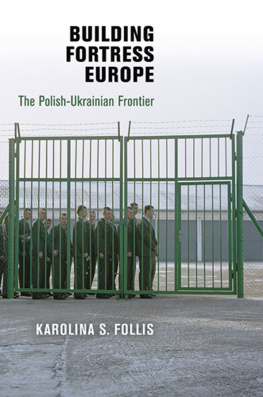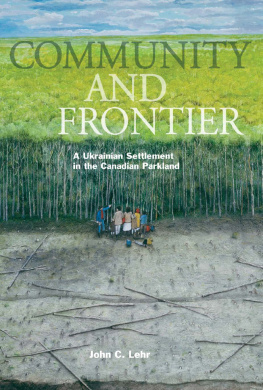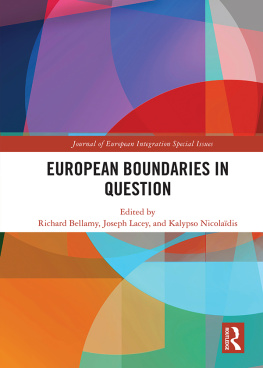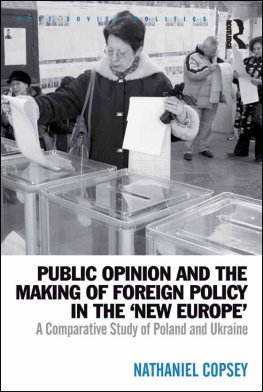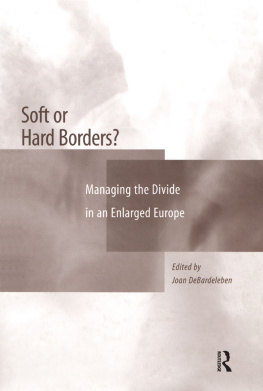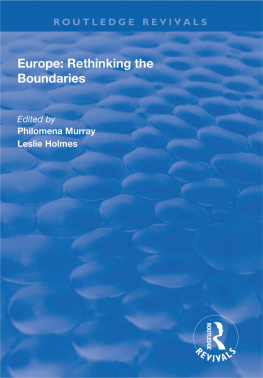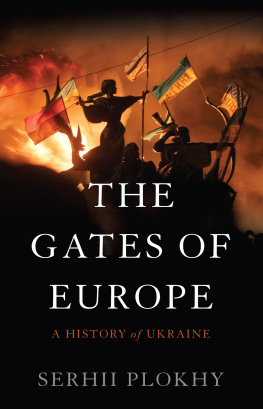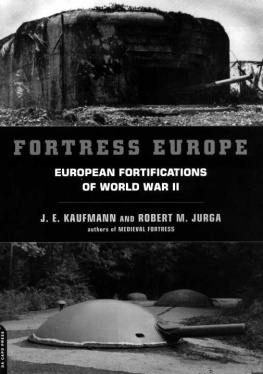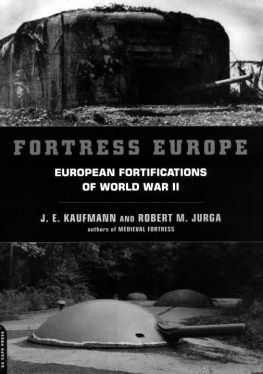Copyright 2012 University of Pennsylvania Press
All rights reserved. Except for brief quotations used for purposes of review or scholarly citation, none of this book may be reproduced in any form by any means without written permission from the publisher.
Published by
University of Pennsylvania Press
Philadelphia, Pennsylvania 19104-4112
www.upenn.edu/pennpress
Printed in the United States of America on acid-free paper
10 9 8 7 6 5 4 3 2 1
Library of Congress Cataloging-in-Publication Data
Follis, Karolina S. (Karolina Szmagalska-)
Building fortress Europe : the Polish-Ukranian frontier / Karolina S. Follis.1st ed.
p. cm. (Democracy, citizenship, and constitutionalism)
ISBN 978-0-8122-4428-1 (hardcover : alk. paper)
Includes bibliographical references and index.
1. European UnionBoundaries. 2. ImmigrantsPoland. 3. ImmigrantsUkraine. 4. Polish peopleUkraine. 5. UkrainiansPoland. 6. PolandBoundariesUkraine. 7. UkraineBoundariesPoland. I. Title. II. Series: Democracy, citizenship, and constitutionalism
DK4185.U38 F65 2012
943.86057pcc
2012008452
Chapter 1
Introduction: Rebordering Europe
We are like travelers navigating an unknown terrain with the help of old maps, drawn at a different time and in response to different needs.
Seyla Benhabib
The expansion of the European Union on May 1, 2004, to incorporate eight new member states in postsocialist Eastern Europe, and its second act of including an additional two in 2007, have been the latest in the centuries-long sequence of border shifts in Europe. Contours of European maps have usually changed in the aftermath of wars. This time, however, the shift was peaceful, and the territorial outlines of the countries involved remained untouched. Instead, their borders were refitted for a new purpose. Where the new members bordered on each other, or on old EU member states, frontiers became the open internal EU borders, as, for example, between Poland and the Czech Republic, Slovakia and Hungary, Hungary and Austria. Where they touched countries that so far have not received the invitation to join the European Union, the boundaries became external EU borders and thus subject to a whole new order of regulation and policing (for example, Poland-Ukraine, Poland-Belarus, Slovakia-Ukraine, Estonia-Russia). Between 2003 and 2008 I returned to Poland and Ukraine regularly to study the human consequences and political implications of this peculiar shift.
It affected the daily routines of state practiceborder control and policing, traffic, and immigration bureaucracyas well as the larger issues of geopolitics and foreign policy. The changes insinuated themselves also into seem shy. That impression, however, dissipated halfway through our first conversation, at a caf in her neighborhood one spring afternoon. She was a cheerful person with a penchant for telling stories, many of them having to do with the hazards and tricks of negotiating the border between Ukraine and Poland, the EU-imposed visa requirements, and the day-to-day perils of being an illegal migrant worker. People here need us, she told me,
Figure 1. Map of the enlarged European Union. European Union, 2011.
everyone in Warsaw has their Ukrainka, to do the work they dont want to do. Polish women work in nice offices, wear nice clothes, they dont have time to clean and cook. And so what are these visas for? Everybody knows that were going to come anyway. If we have to pay [bribes] we pay. If we have to lie [to the officials], we lie.... They [border guards] are not so stupid to think that we are coming on vacation. They know why we are here. They must check the visa, we must show the visa. And what? It changes nothing.
Anna, her brother, his wife, and her sister all come from a small town in the Lviv oblast (district) in western Ukraine. Together with two more female friends, they share a couple of boarding rooms in the attic of a neglected building in a centrally located neighborhood in Warsaw. Every morning they commute to their multiple, ever-changing, and unauthorized jobs all over the city. Anna was the youngest; her brother Dima was the oldest at forty. She has lived and worked in Poland intermittently since 1998, when she came for the first time with her brother to look for a job. Dima, like most male Ukrainian workers, has held mostly short-term jobs in construction. She started out picking and canning fruit and with time moved to better-paid urban house-cleaning jobs, where she was able to earn up to six hundred U.S. dollars per month (in 2006).
Anna and her roommates, like thousands of other Ukrainians from their region and beyond, could not make ends meet back home. This has been due to persistent high unemployment that has marred the region since the collapse of Soviet-era industry and collective agriculture (official figures in 2008 were 8.3 percent for Lviv oblast, but it is thought to be higher).in 2003, even within the East there is some place more west... enjoying relative economic success, proximity to the European Union, higher density of international transit on major highways, or greater strength of the local currency in relationship to the Euro (Matynia 2003: 501).
The precise number of such migrants is subject to some dispute, but informed estimates range from 300,000 to 500,000. Yet Anna and others still negotiate a border regime which has thickened on EUs eastward expansion, and which is built on the assumption that every non-EU traveler is a potential undesirable migrant.
But Ukrainian workers continue to cross the border. They adjust to the increasing constraints imposed by border regulations, but they also subvert and resist them. They exploit the economic opportunities enhanced by EUs closeness, simultaneously connecting the Polish and Ukrainian societies through a web of relationships that are asymmetrical, but vital to both sides. At the same time they develop new ways of living away from their families, yet in permanent connection to a home where they cannot be physically present. Every time I come here, I hope its the last time, Anna told me one Saturday night when I visited her and her three roommates, Halyna (her sister-in-law), Nadia, and Ola. Permanently settling in Poland is neither their desire nor a real possibility. Ultimately, the objective is to go back to Ukraine, for Anna, her friends, and the vast majority of other itinerant workers. As we drank inexpensive Moldovan wine and ate Ukrainian cookies, the women told stories of their repeated border crossings and the scary, unpleasant, and funny things that happened in the course of their journeys. They recalled hustlers who hang out at border crossings and bus terminals and sign up women for prestigious jobs at nightclubs and escort services; all four women dismissed the possibility of ever doing such work, but they claimed to have had acquaintances who did. They talked about the bribes they needed to pay to customs agents when their hard-earned cash was found on them during return trips home. They explained how one can circumvent the border regulations and overstay the visa without running into trouble by altering the passport stamp, having the passport illegally stamped without leaving the country, or purchasing forged documents.

